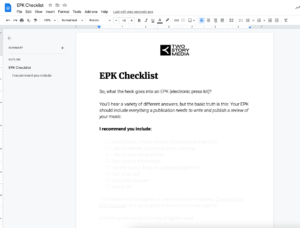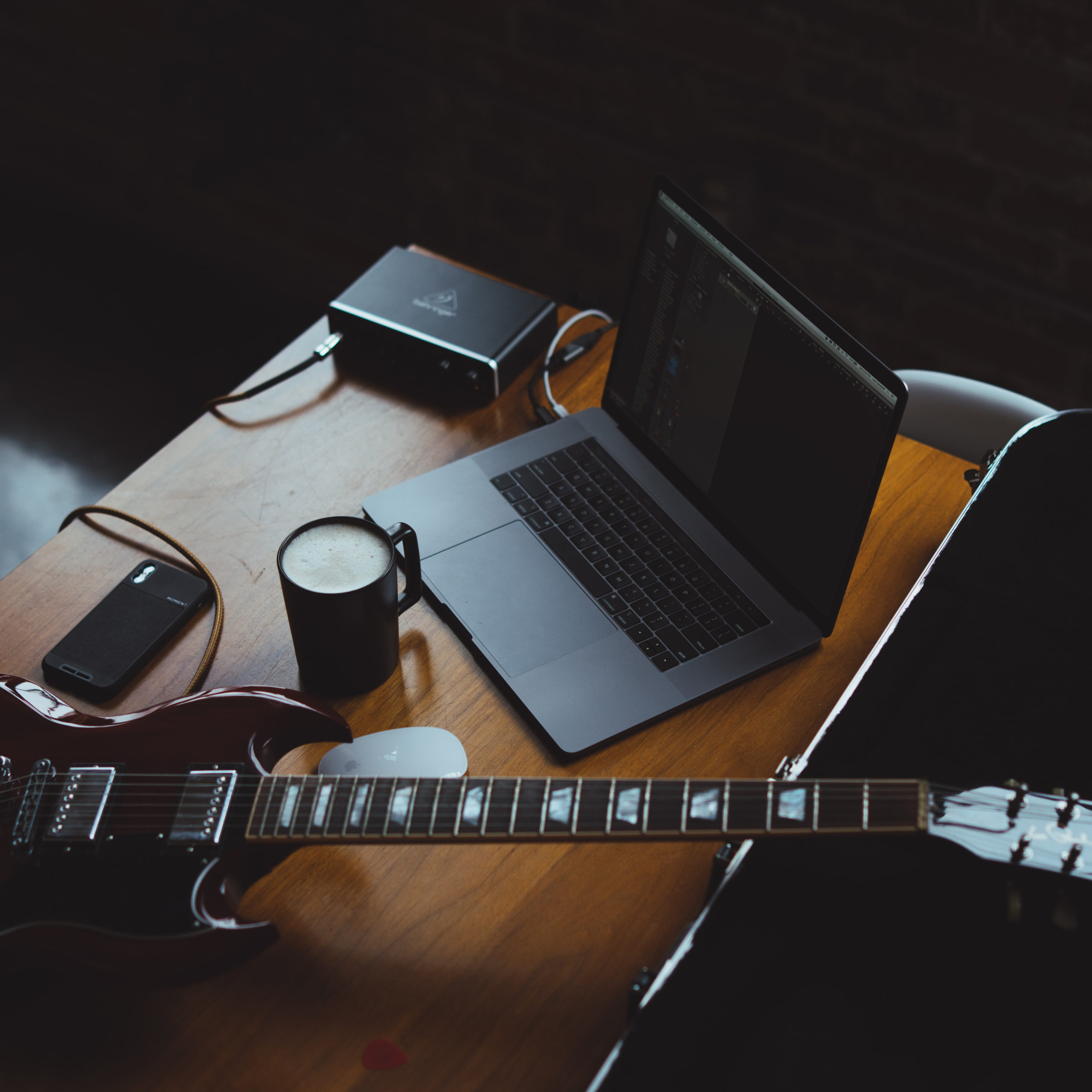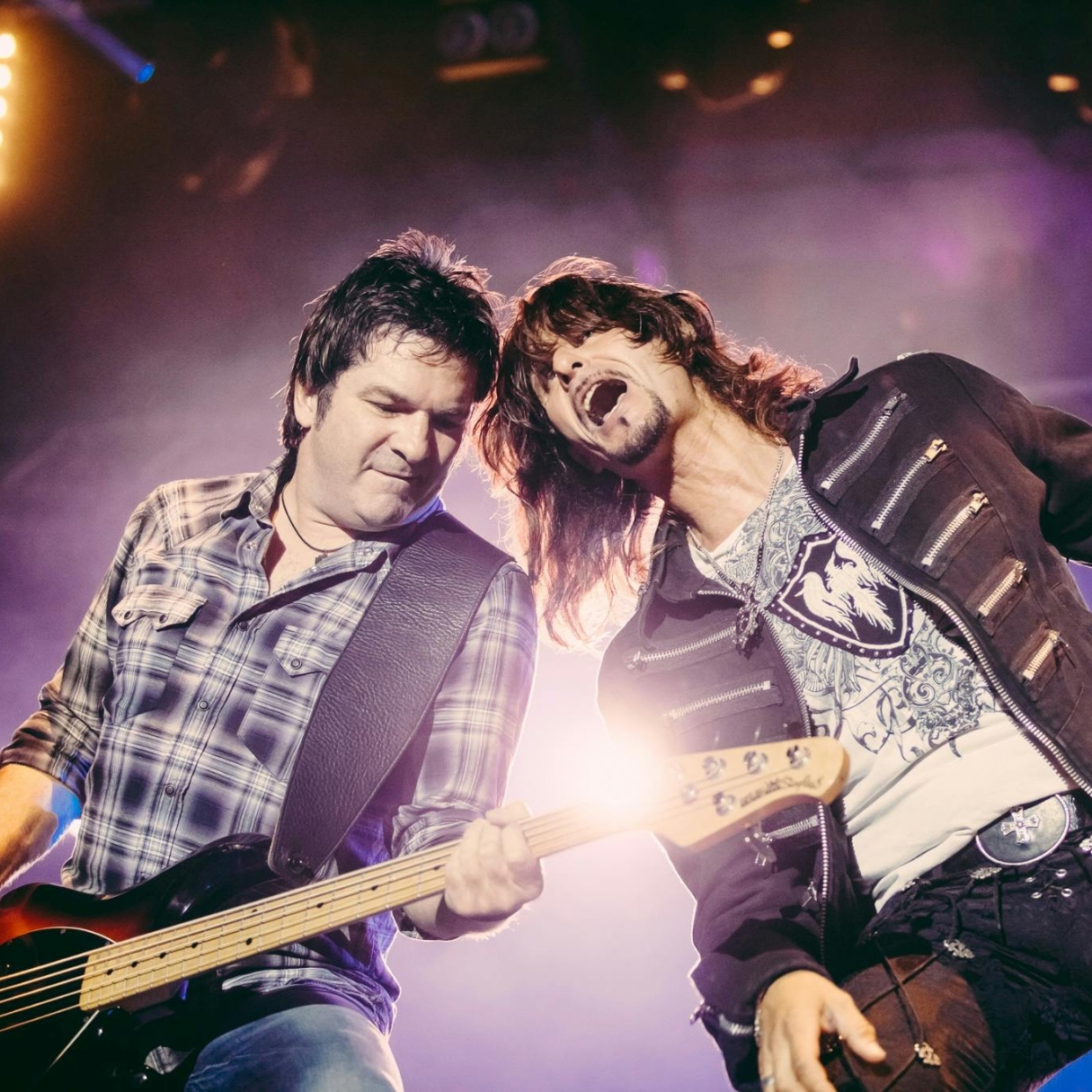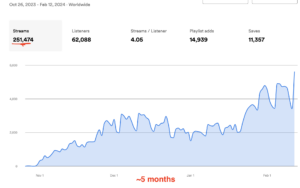If you’re an indie artist, chances are you’ve tried to pitch your music to blogs (like this one), playlists (like this one), radio stations (we don’t have one of those yet), and maybe even labels (don’t have that either).
As an artist, I’ve pitched myself to all of those things. Speaking from experience, it can feel pretty tedious to gather all the materials and links to my music and websites in an email or form submission.
As a blogger, I’ve received every kind of submission possible. Some people are great at it. Others clearly don’t put much effort in. It might sound harsh, but because of the sheer volume of submissions we get every day, it takes very little for me to delete emails. (Jon is a better dude than me and tries to review them all). If a pitch is too busy, too wordy, too sloppy, or outdated in any way, most writers, playlisters, and other curators will delete it without hesitation.
The best way to solve this problem is to have all your content in one place online: an Electronic Press Kit (EPK).
What is an EPK?
An EPK is essentially a one-stop place for all of your online promotional materials. It’s the closest thing an artist has to a resume.
Essentially, it’s a landing page intended for potential promoters who want to learn more about your current projects: albums, tours, music videos, etc. It should be easy to find, intuitive to navigate, edited for clarity and simplicity, and originally tailored to fit your brand. Most artists include it as part of their website, so that it’s built into their online presence already.
An important note: your EPK itself is not really for your fans, though the materials that are included will ultimately be seen by fans. It’s used to pitch your music for press placement, and should be focused on what curators want to see/hear/know.

FREE RESOURCE 👇
EPK Checklist & Template
Want to get your music covered in cool publications?
I get like 9 million submissions each day from artists. Here’s what you need to include in your EPK so you stand out / get covered.
What’s included in an EPK?
It depends on the content you have and are trying to push. But here are the most important things to include in an EPK:
- Press photos, taken by a professional photographer
- Artist bio, ideally with a few options of different lengths
- Links to music, socials, and other relevant content
- Videos, whether music videos or live performances
- Press coverage, including any previous reviews/interviews
- Contact info, including email and mailing addresses
There are a few other common things, which we’ll briefly cover later. But these are the main components of an EPK. Let’s talk about each one.
Press Photos
The world of marketing is getting more and more visual. Photos, pictures, and other visuals like fonts and colors play the largest role in conveying your brand to potential curators. And, whether you’re comfortable in front of the camera or not, photos of you are probably the most important aspect of your brand.
Having high-quality press photos are key to any campaign, and unless your brand is entirely based on taking selfies (which it almost definitely shouldn’t be), you probably need to hire out a photographer.
Here are some quick tips for making sure that your photos are effective, and that they fit well into your EPK:
- Make sure you get photos of a bunch of different dimensions, angles, and styles. Depending on the curator, they may ask for headshots, full-body shots, pictures from live performances… some websites even ask for long, landscape, banner-style photos. Basically, you can never have enough photos on-hand.
- Be yourself on camera, and pose according to your brand. If your music is guitar-driven or piano-heavy, try including your instruments as props. If you make upbeat pop music, make sure you smile a lot, and don’t be afraid to use close-ups. If you’re a folk artist, feel free to own it by wearing flannel and taking pictures in the woods. Just like your artistry, your photos should reflect whatever comes naturally to you.
- Avoid overused backgrounds. Kendrick Lamar is the last known artist to successfully make a brick wall look cool.
Again, photos are usually the most eye-catching part of an EPK, so make sure they’re high-quality, fitting to your brand, and shot with intention and attention to detail.
Artist Bio
Your artist bio is really important. It’s your chance to tell your story, leading up to your most recent project. It’s also the element of an EPK that most artists get wrong.
The most important thing to consider when preparing an artist bio is the point of view. There are generally two options for an artist bio: either someone else writes it in the third person (this is traditional), or the artist writes it in the first person (this is more modern). If you want it to be in the third person, absolutely do not write it yourself. It’s always really obvious, really cringey, and altogether nearly impossible to pull off. Pay somebody else to do it, or write your own in the first person.
Here are some strategies for making sure your bio tells your story well, and fits into your EPK:
- Choose your point of view depending on your brand. If you’re younger, independent, personable, and you want your fans to feel like they know you on a personal level, then maybe consider writing your own bio in the first person, as conversationally and true to your own writing and speaking styles as you can. If you’re older, in a band, and professional, try hiring a PR pro to write your bio for you, and make sure their writing style fits your image.
- Have multiple bios of different lengths. Some curators only want a one-sentence description of who you are and what you do; some love to give as much context as possible. Having multiple options means nobody will have to do editing for brevity or rambling on for length, and you’ll be ready to pitch using exactly what people ask for.
- Cover the key points of your musical history and style. Where you’re from, who your influences are, and what your music sounds like are great places to start.
- If you were gonna name-drop your high-profile collabs anywhere, your bio is the place to do it.
- Be creative in your word choice, and avoid cliche words and phrases like “an up and coming artist from Grand Rapids,” “from a young age, she loved writing songs on her dad’s guitar” and anything else that applies to every artist ever.
- Put your story in the context of whatever your most recent project is. Talk about previous records, experiences, and accomplishments as they apply to your current career. Bios should invite people to join your journey, not just talk about where you’ve been.
Just like with good music, a good bio is original, clever in its word choice, and clear in its telling of your story in a way that encourages people to know more about you.
Links
Links are pretty self-explanatory: if you have any promotional materials that exist online, social media pages, or channels where you showcase your music and deliver news to your fans, include them in your EPK.
Some good strategies for EPK links are:
- Include all of your socials, with the most focus on whichever channels you use most actively. For modern artists, that should almost definitely include TikTok, Instagram, YouTube, Twitter, and Facebook. There are exceptions, but it’s best to use all of these as much as you can without obsessing over any of them.
- Include any common ways to listen to and buy your music online, with the focus on the most popular sites. For US artists, your Spotify and Apple Music profile links should be front and center. Also include places where people can hear your music for free, like SoundCloud and YouTube. If you have a shop where people can buy physicals, include that too.
- Consider using some sort of consolidation service that puts all of your links in one place, like LinkTree. This simplifies the process of a curator having to find all your links.
- Use hyperlinks so that there’s not a gross long URL anywhere in your EPK.
With links, find as many ways to minimize clicks as you can. Keep things sleek, and make it intuitive and easy for curators to find your channels.
Videos
Live performances and music videos are a great way to keep attention for more than five seconds. If you have any to use, here are the best ways to use them in your EPK:
- Embed videos instead of linking to them, so that people don’t have to leave your press kit to watch your content.
- Choose thumbnails that work essentially the same way as artist photos: they catch people’s eyes and make them want to check out your content more. Without joining the annoying YouTube trend of making your thumbnails over the top, definitely pay attention to how your thumbnails portray your brand.
- Only include your best work. If you’re the type of artist who posts a cover video to YouTube every week (no shame if that’s you), don’t worry about including them all in your EPK. Since your EPK is essentially the front page promoters see for your artistry, only include the most recent and the relevant content. A music video or live performance of your most popular song is probably your best bet.
- Again, make sure your videos are professional. If it was shot on a cell phone, probably refrain from including it in your press kit.
Press coverage
If someone is looking at your EPK, then they probably are considering covering your music on their platform. A great way to convince people to cover you: show that your music has been covered before.
EPKs are meant to bring in a cycle of press, and one of the key aspects of that is to showcase the press you do receive. If you’ve been interviewed, reviewed, or included in any notable platform (playlists, radio, blogs, magazines, etc.), then make sure to link to it in your press kit.
Here are the best ways to do that:
- Don’t be braggy, but don’t be modest. If you’ve been covered in a major outlet like Rolling Stone or Pitchfork, make sure that it’s a noticeable part of your EPK. But don’t make any of your press coverage the main thing, or it will probably come across as braggy.
- Try to make it clear what types of press you have received in the past. This helps potential promoters know what it is you’re looking for, and what you’re open to. If you only have a bunch of music reviews featured on your EPK, it may be a turn off to outlets who want to interview you.
Contact info
This is pretty self-explanatory, but it’s also really important. Keep an email address in a spot where people can find it easily, as well as the contact info for anybody else on your team, like managers, booking, etc. It’s also worth having a mailing address (ideally a business one, so people don’t know exactly where you live), so that people know which city you’re in, and so that they can send you anything related to coverage (a microphone for recording a remote interview, a free copy of the magazine your review is in, etc.).
Any other things to keep in mind?
Depending on what your brand is and where you are in any given release cycle, it may be smart to include a generic press release. These are great for giving curators a short news story about your most recent project.
Lastly, I said earlier that an EPK is the closest thing an artist has to a resume. That means that you should treat it like one. Have an editor or a friend look over it entirely for clarity errors, typos, missing/wrong links, and anything else that could make it seem unprofessional. Electronic press kits are designed to be as simple, easy to navigate, and eye-catching as possible, and they should include everything a promoter or curator needs to know about you and your music. It’s easy to tell when an artist didn’t put much effort into their press kit, and just like a bad resume, it gets thrown away if it’s sloppy, unoriginal, or inauthentic.
On the flip side: while resumes can be boring, think of your EPK as an extension of your artistry. It’s a chance to showcase your creativity in a new medium, and tell your story in a way that pulls more people into your fanbase. Like a new record or a new photoshoot, that’s something to be excited about.









